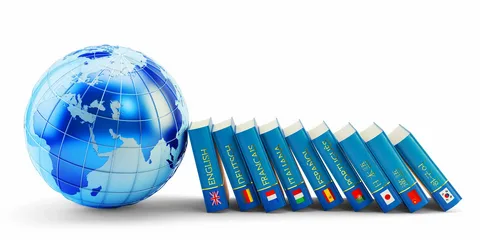The translation process that takes place with https://lingvanex.com/translation/english-to-tagalog is one that incorporates critical steps of editing and revision, all aiming at perfecting the end product such that it is a quality delivery serving to reflect to the fullest and accuracy the meaning enshrined in the original text. The object of these steps is not only to correct mistakes but also to fine-tune the translation so that it becomes idiomatic in the target language.
The Importance of Editing and Revising Translations
Quality Assurance: The key to maintaining the quality of the translation lies in editing and revising. These are very important procedures in detecting and correcting errors, inconsistencies, or awkward phrasing in the translated text.
Clarity and coherence: Editors and revisers assure that the translated text is clear and coherent, meaning the message in the source text flows accurately into the target language.
Cultural Appropriateness: It is through editing and reviewing that the translator can look into any possible cultural differences and make sure that what is translated, in reality, culturally fits the target audience.
All of these processes, among them, is the most important one, that the translation must comply with the grammatical, syntactic, and stylistic norms of the target language.
The Process of Editing and Revising Translations
Compare the source text with the original English https://lingvanex.com/translation/english-to-spanish translation. This stage is the first one, comparing the translation with the source text, and presenting content exactly without vainly skipping or adding something.
Quality Assurance: By careful examination of the translation, it will make sure that there are no such mistakes as regards grammar, spelling, punctuation, or typing in the translations.
Verify terminology and style for consistent use of proper terminology, ensuring the style of translation conforms to what the text should achieve and whom the text is directed towards. Final Review: The last reading by a translator who should be able to sound naturally fluent and not like a translation.
Challenges in Editing and Revising Translations
Subjectivity: Often, such a choice of the “best” translation is left at the editor’s or reviser’s subjectivity, based on their own personal style or preference, or even understanding of the text.
Time and Resources: Editing and revising can be time-consuming processes, requiring meticulous attention to detail.
Without a doubt, the level of editing should never get too heavy to the point where the translation is being subordinated to such an extent that the original voice of the translator, or even the voice of the original text, is lost. Editing and revising are crucial stages in the translation process. This does not, however, mean that they are not inexorable for delivering an accurate, high-quality, and culturally appropriate translation. In other words, the task of editors and revisers is not to find mistakes but rather to polish the target text so that it turns out to be just natural in the target language and does not allow the reader to realize that this is a translation.




